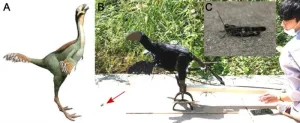Recent developments at MD Anderson include a combination treatment for KRAS G12C-mutant colorectal cancer; using liquid biopsies to classify small-cell lung cancer subtypes; an artificial intelligence model to improve non-small cell lung cancer classification; a novel method of delivering gold ions into tumors to improve radiation sensitivity; molecular insights into age-related inflammation; improved outcomes for certain patients with multiple myeloma receiving stem cell transplants; a new understanding of why tumors from the appendix metastasize to the peritoneal cavity; and trial results of circulating tumor DNA as a predictive biomarker for adjuvant therapy response in patients with low-risk colon cancer.
Combining sotorasib and panitumumab shows early antitumor activity in KRAS G12C-mutant colorectal cancer
Current third-line and later treatment options for RAS-mutant metastatic colorectal cancer have shown only limited effectiveness. In a Phase Ib trial of 48 patients, researchers led by David S. Hong, M.D., found that the combination of sotorasib, a KRAS G12C inhibitor, and panitumumab, an EGFR inhibitor, showed promising efficacy in a subset of patients with KRAS G12C mutations. In the dose expansion cohort of 40 patients, the disease control rate was 93% and the tumor shrinkage rate was 88%, with a median progression-free survival and overall survival of 5.7 months and 15.2 months, respectively. None of the patients experienced dose-limiting toxicities, and grade three treatment-related adverse events were mostly dermatologic, occurring in 27% of patients. These results suggest this combination therapy has potential for patients with chemotherapy-refractory KRAS G12C-mutated metastatic colorectal cancer. Learn more in Nature Medicine.
Biomarkers from tumor and blood samples aid in lung cancer subtype classification
Small-cell lung cancer (SCLC) has four distinct disease subtypes, but categorizing these groups has been challenging due to limited available tissue samples. Recent studies indicate that liquid biopsies, or blood tests, can use DNA methylation status to develop prognostic signatures and identify unique vulnerabilities in various cancers, including SCLC. To this end, researchers led by Simon Heeke, Ph.D., Lauren Byers, M.D., and John Heymach, M.D., Ph.D., studied transcriptomics and DNA methylation sequencing from 179 patients with SCLC. Using machine learning approaches, they developed a classification system that can distinguish among SCLC subtypes. By examining DNA methylation status from both tumor and circulating-free DNA in liquid biopsy samples, the researchers showed that tumors can evolve during disease progression, highlighting the importance of monitoring patients over the course of their treatments. The study suggests that using DNA methylation-based biomarkers from tumor or blood samples is a viable method of classifying and tailoring personalized care for patients with unique SCLC subtypes. Learn more in Cancer Cell.
AI model provides insights into lung cancer severity and prognosis
Lung adenocarcinoma (LUAD), the most common type of non-small cell lung cancer, has unique growth patterns that impact prognosis. Current International Association for the Study of Lung Cancer (IASLC) grading systems face challenges in consistently defining and recognizing these patterns, affecting accuracy and leading to variability among pathologists. In this study, researchers led by Yinyin Yuan, Ph.D., and Xiaoxi Pan, Ph.D., created a first-of-its kind artificial intelligence (AI)-based model, ANORAK, which dissects LUAD growth patterns at pixel level to better predict disease-free survival and prognosis of early-stage LUAD tumors. This technology, tested in 1,372 LUAD cases across four independent cohorts, provides an unbiased and automated pipeline for determining tumor grading in patients with LUAD. The AI model also offers insights into the diverse features of LUAD that cannot be determined by traditional classification methods, highlighting the need for improved quantification methods for this patient population. Learn more in Nature Cancer.
New approach uses gold ions to enhance radiotherapy efficacy in pancreatic tumors
Gold nanoparticles have shown potential for treating cancer by enhancing photothermal and radiation treatments as well as helping with drug and gene delivery to specific locations. However, delivering these nanoparticles to tumors and directly into cancer cells is challenging, particularly in solid pancreatic tumors. To overcome this barrier, Aaron Schwartz-Duval, Ph.D., Konstantin Sokolov, Ph.D., and colleagues devised a strategy using gold ions, which can more easily penetrate tissue, instead of nanoparticles. These ions form gold nanoparticles inside cancer cells through a natural process called biomineralization. In the study, this sensitized pancreatic cancer to radiotherapy and suppressed tumor growth, resulting in improved survival compared to radiation alone. These results show that using gold biomineralization leverages existing biological pathways to improve the efficacy of radiotherapy, meriting further investigation. Learn more in ACS Nano.
TXNRD1 enzyme drives innate immune response in senescent cells, with implications for aging and cancer
Chronic inflammation associated with aging – called inflammaging – contributes to cancer development and progression. Cellular senescence, a state in which cells have lost their ability to divide and multiply, also regulates cancer and tissue aging by secreting proinflammatory factors. There is evidence to suggest that TXNRD1, an enzyme regulating cellular redox, is implicated in tissue aging. In a new study, Rugang Zhang, Ph.D., and colleagues discovered that TXNRD1 drives inflammaging through the cGAS-STING pathway in a senescence-dependent manner that is distinct from its activity as a redox enzyme. Blocking the TXNRD1 interaction with cGAS using a specific inhibitor lowered markers of inflammaging in preclinical models, suggesting that the TXNRD1-cGAS interaction is a potential therapeutic target for both tissue aging and cancer. Learn more in Nature Aging.
Subset of patients with multiple myeloma have better outcomes after autologous stem cell transplant
According to a new study, newly diagnosed multiple myeloma (NDMM) patients harboring additional copies of chromosome 1q, a cytogenetic abnormality, have better outcomes than patients with other high-risk cytogenetic abnormalities when treated with an autologous stem cell transplant (autoSCT). Researchers led by Oren Pasvolsky, M.D., and Muzaffar Qazilbash, M.D., conducted a retrospective analysis of patients with NDMM treated with an autoSCT at MD Anderson. At 100 days post-transplant, 78% of patients achieved a very good partial response or better, and 38% achieved minimal residual disease (MRD)-negative very good response or better. Overall, 87% of patients achieved a very good partial response or better and 50% achieved MRD-negative very good response or better. A combination of bortezomib, lenalidomide and dexamethasone was the most common induction regimen, used in 41% of patients. Progression free survival was 2.9 years and overall survival was 6.7 years, both better than what is reported with other high-risk abnormalities. Learn more in Blood Cancer Journal.
Study uncovers why tumors from appendix metastasize to peritoneal cavity
Appendix tumors usually metastasize to the peritoneal cavity – the space between the diaphragm, walls of the abdominal and pelvic cavities, and abdominal organs – but why this occurs remains unknown. To provide greater insight into this process, researchers led by Vinay Pattalachinti, Ichiaki Ito, Ph.D., and John Paul Shen, M.D., took a multi-omics approach to compare several models of appendix tumors implanted into both the flank and the peritoneal space of laboratory models. The results showed that peritoneal implanted tumors grew faster and had a higher expression of known cancer proliferation markers as well as the downregulation of a signaling pathway that triggers cell death. By identifying specific ways in which the peritoneal microenvironment promotes appendix cancer growth, this study opens new possibilities for potential treatments of this orphan disease. Learn more in Molecular Cancer Research.
Circulating tumor DNA not predictive of adjuvant chemotherapy response in patients with low-risk colon cancer
The presence of circulating tumor DNA (ctDNA) in patients with colon cancer after surgical resection has been associated with persistent disease and can serve as a prognostic marker for risk of recurrence. In a Phase II trial examining ctDNA to predict treatment response to adjuvant chemotherapy for low-risk stage II colon cancer, researchers led by Van Morris, M.D., randomized 636 patients into two cohorts. One group received standard of care and the other received chemotherapy if ctDNA was detected via a tumor-agnostic assay. The primary objective was to compare ctDNA clearance after 6 months among patients with detectable ctDNA at baseline. At the analysis of the Phase II endpoint, only 11% of patients in the chemotherapy arm had ctDNA clearance after 6 months compared with 43% of patients in the surveillance arm. Because the primary endpoint was not met, investigators stopped enrollment on the study. This was the first National Cancer Institute (NCI)-sponsored prospective trial to incorporate ctDNA as an integral biomarker for any solid tumor type. Morris presented results at the American Society of Clinical Oncology Gastrointestinal Cancers Symposium.
Awards and honors
James Allison, Ph.D., regental professor and chair of Immunology and director of the James P. Allison Institute at MD Anderson, was inducted into the National Inventor’s Hall of Fame for inventing immune checkpoint blockade therapy. In case you missed it
Read below to catch up on recent MD Anderson press releases.
Cervical cancer rates rising in low-income U.S. counties CD19-targeted CAR NK cell therapy achieves promising one-year results in patients with B-cell malignancies
- 30 -
END


